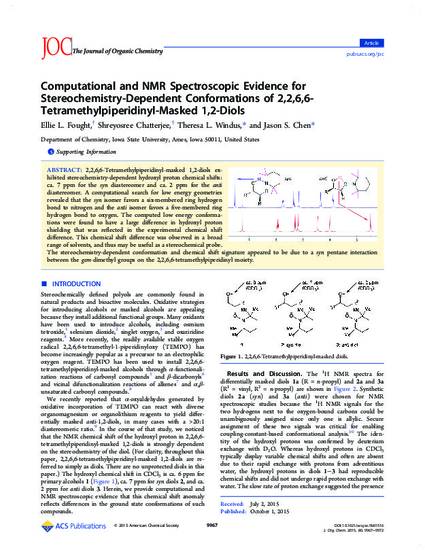
2,2,6,6-Tetramethylpiperidinyl-masked 1,2-diols exhibited stereochemistry-dependent hydroxyl proton chemical shifts: ca. 7 ppm for the syn diastereomer and ca. 2 ppm for the anti diastereomer. A computational search for low energy geometries revealed that the syn isomer favors a six-membered ring hydrogen bond to nitrogen and the anti isomer favors a five-membered ring hydrogen bond to oxygen. The computed low energy conformations were found to have a large difference in hydroxyl proton shielding that was reflected in the experimental chemical shift difference. This chemical shift difference was observed in a broad range of solvents, and thus may be useful as a stereochemical probe. The stereochemistry-dependent conformation and chemical shift signature appeared to be due to a syn pentane interaction between the gem-dimethyl groups on the 2,2,6,6-tetramethylpiperidinyl moiety.
Available at: http://works.bepress.com/theresa-windus/14/

Reprinted (adapted) with permission from J. Org. Chem., 2015, 80 (20), pp 9967–9972. Copyright 2015 American Chemical Society.